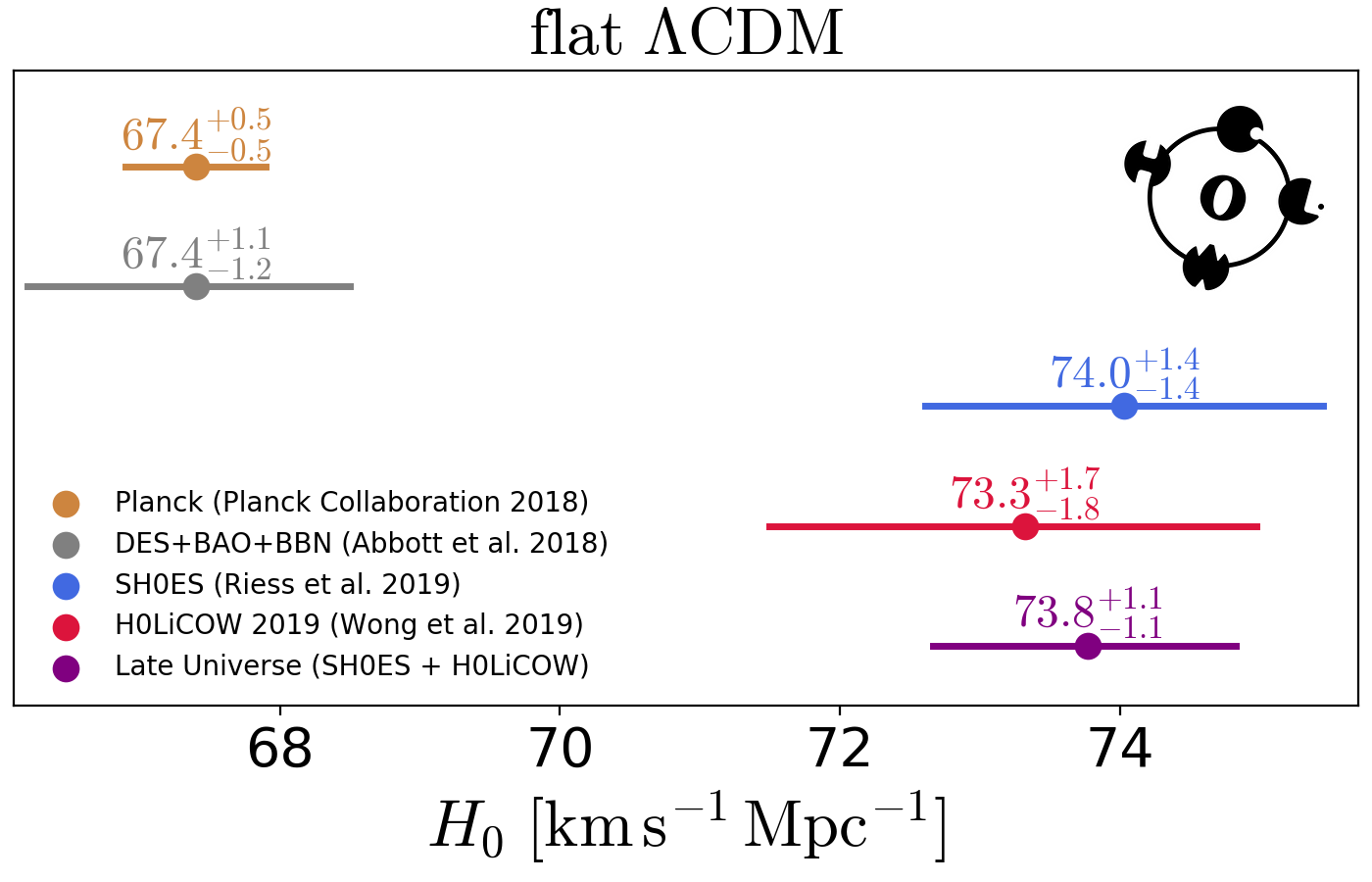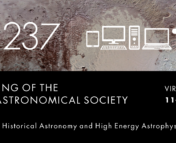In this series of posts, we sit down with a few of the keynote speakers of the 237th AAS meeting to learn more about them and their research. You can see a full schedule of their talks here, and read our other interviews here!
The era of precision cosmology is here. With percent level precision on the measurement of cosmological parameters, the story of the shape, age and size of the Universe seems to have been told. But in 2021, we find ourselves in the middle of a fascinating debate — the ‘exact’ value of the Hubble constant. Two different approaches — a direct local measurement via the cosmic distance ladder (with Cepheid stars), and another via the early Universe cosmic microwave background — have yielded different results, resulting in values that are in significant tension with each other (see here , here and here).

Gravitational lensing, and specifically the measurements of gravitational lens time delays, is a third approach whose independent analysis can break the deadlock. This year’s winner of the Lancelot M. Berkeley − New York Community Trust Prize for Meritorious Work in Astronomy (Berkeley Prize), Prof. Sherry H. Suyu, aims to do just that! Prof. Suyu humbly credits her collaborators, “It’s a team effort. I have the H0LiCOW collaboration to thank for the award.” Prof. Suyu is the Max Planck Research Group Leader at the Max Planck Institute for Astrophysics (Germany), an Assistant Professor at the Technical University of Munich (Germany), and a Visiting Scholar at the Academia Sinica Institute of Astronomy and Astrophysics (Taiwan). She leads the H0LiCOW project — H0 Lenses in COSMOGRAIL’s Wellspring.
Lensed Quasars and the Hubble Constant
“Distant lensed quasars are exciting objects,” says Prof. Suyu, “If there is a galaxy between you and the quasar, the light from the distant quasar gets bent by the gravitational field of the foreground galaxy. This bending of light by gravity is the gravitational lensing effect. If the foreground galaxy is massive, you can create multiple magnified images of the quasar (the regime of strong lensing).”
Quasars are inherently variable objects. The different images seen as a result of distortion of the various light paths by lensing causes something called a `gravitational time delay’ i.e. each image’s variability pattern will be delayed differently in time. “This time delay allows us to measure distances to these objects, and can be measured in units of days, by monitoring quasar brightness variations with a telescope.” The key part here is this — this distance measurement is mainly sensitive to how fast the universe is expanding i.e. the Hubble constant.
“When we started H0LiCOW in 2012, we had only 5 systems in our sample”, says Prof. Suyu. “The goal was to measure H0 with better than 3.5% uncertainty. (In recent years) we have partnered with new collaborations and more than doubled the existing published sample. (With this new sample) this independent method of measuring H0 can reach 1% uncertainty and can help solve the H0 tension.”

What does Prof. Suyu think of this tension at the moment? “I think it’s really exciting. If you just had two probes before, then it is still unclear what is causing this discrepancy (in the H0 measurements; see Figure 2). The difference might be because of measurement errors or exciting new physics. An independent measurement is really important. (To reach <1% precision), we need more lenses. To measure the distance, we need time delays, a robust lens model, and also a characterisation of the line of sight mass that is also (weakly) lensing the quasars. Developing new analysis techniques is also crucial e.g. automating the lens modeling efforts via machine learning.“
Talking with Prof. Suyu, we get the sense that H0LiCOW functions with deep care of and emphasis on robust statistical techniques. “We carried out blind analyses. We developed upgraded analytical approaches that were applied to the lenses without knowing what H0 value we were going to measure. This was really stressful, because we had to run gazillions of tests, and we agreed that we would only ‘unblind’ when we were satisfied with our methodology, and that we put the results we obtain in the manuscript, no matter the H0 value. Our value, without any experimental bias, agrees very well with the SHOES measurement, and strengthens the tension at the moment. I am more now on the side of ‘maybe there is new physics!’ ”
Path towards Astronomy
I asked Prof. Suyu about her journey from Canada (where she grew up), to Munich, and everything in between. “I did my undergraduate studies at Queen’s University, which was one of the few places in Canada at the time that offered a specialization in Astrophysics. After that, I took some time off — which I recommend to all students by the way. I was always interested in math when I was young, and got excited about physics because it allows me to see everyday phenomena with such a fresh and exciting perspective, especially when I learnt about orbits! I went to Caltech for my grad studies, followed by a postdoc at Bonn, Germany. I thought, ‘a postdoc is long enough to experience the European way of life’. “
Prof. Suyu went back to California for a joint postdoctoral fellowship position between UCSB and Stanford, followed by a faculty position in Taiwan, where her parents are based. After working there for three years, she moved back to Europe.
What is her advice to students starting out in Astrophysics? “For undergraduates just starting, it’s good to learn different things at the time, because by being exposed to different areas you can identify what subjects and fields interest you. Later on, it would also be useful to have learnt statistical techniques and some basic computational skills; nowadays many research projects require some form of the above. For me, the transition was very steep, since my undergraduate training was very course-work focused. As long as students enjoy what they do, that’s the most important thing.”
Prof. Suyu’s parting advice to me and our readers was absolutely lovely: “It is super important to have an advisor who supports you. I was very fortunate to have supportive advisors early in my career. The advisors you choose will shape you and your way of thinking. You would ideally want to get someone who is not just a good scientist, but would also care for you and nurture you as a person, as a whole. “
To learn more about Prof. Suyu’s work on gravitational lenses, the H0LiCOW collaboration, and her views on the H0 debate, check out her plenary talk at 5:50PM EDT on Friday, January 15, 2021 at #AAS237!
Astrobite edited by: Gloria Fonseca Alvarez
Featured image credit: American Astronomical Society


